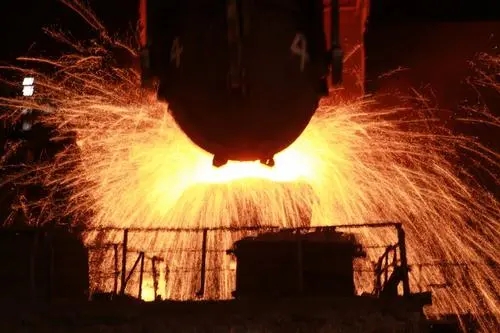Refractories product action magnesia carbon brick price
Posted time:2021-12-10 Page view:26157Refractory materials used in iron and steel, non-ferrous metals, glass, cement, ceramics, petrochemicals, machinery, boilers, light industry, electricity, magnesiumcarbon brick price military industry and other fields of the national economy, is to ensure the production and operation of the above industries and technological development essential basic materials, in the development of high-temperature industrial production plays an irreplaceable important role. Amorphous refractory
Since 2001, under the strong pull of the rapid development of high-temperature industries such as steel, nonferrous metals, petrochemicals, and building materials, the refractory industry has maintained a good growth trend and has become a major producer and exporter of refractory materials in the world. In 2011, China's refractory production accounted for about 65% of the world, and its production and sales ranked first in the world.

From 2001 to 2010, the output of refractory raw materials and products increased steadily, which was about 2 times that of 2001 at the end of the tenth Five-Year Plan; In 2010, the national output of refractory products reached 28,80,600 tons, about three times that of the end of the tenth Five-Year Plan. As of 2011, China's refractory industry has a total of 1,917 enterprises above designated size, employing more than 300,000 people, achieving sales revenue of 337.679 billion yuan, and achieving product sales profit of 47.737 billion yuan.
However, due to the disorderly mining, processing technology level is not high, the comprehensive utilization of resources is low, the waste is more serious, the above mineral resources, especially high-grade refractory raw materials resources have been less and less, saving resources, comprehensive utilization of resources is a top priority.
Song Zhenyu believes that the refractory industry must guide the organization of scientific mining of raw materials, optimize the comprehensive utilization of resources, especially the homogenization of different grades of mineral deposits, put an end to indiscriminate mining, and gradually promote the more rational use of resources, so that limited resources can play a limited role and achieve sustainable development.
The development of refractory industry is closely related to the amount of domestic mineral resources. Bauxite, magnesite and graphite are three refractory materials. China is one of the world's three largest exporters of bauxite, magnesite reserves in the world, or a large exporter of graphite, rich resources to support China's refractories through the rapid development of ten years.
At the same time, there are many refractory enterprises in China, the scale of enterprises, process technology, control technology, and equipment level are uneven, and advanced production methods and backward production methods coexist. The overall level of cleaner production in the industry is not high, and the task of energy conservation and emission reduction is arduous.
With the "12th Five-Year Plan" period, China will accelerate the elimination of backward and high energy consumption capacity, the industry will focus on the development and promotion of new energy-saving furnaces, the development of comprehensive energy-saving technologies, energy management, "three wastes" emission control and "three wastes" recycling and utilization. It is committed to the recycling and reuse of post-use refractory materials, reducing solid waste emissions, improving the comprehensive utilization rate of resources, and comprehensively promoting energy conservation and emission reduction.
The "Refractory Industry Development Policy" pointed out that the single consumption of refractory materials in China's steel industry is about 25 kilograms per ton of steel, and it will be reduced to less than 15 kilograms by 2020. In 2020, China's refractories with longer life, more energy saving, no pollution and functional products have been greatly improved, and the products meet the needs of national economic development such as metallurgy, building materials, chemical industry and emerging industries, and improve the technical content of export products.
